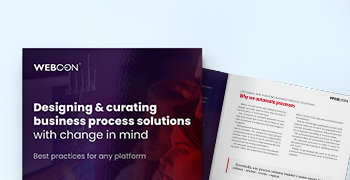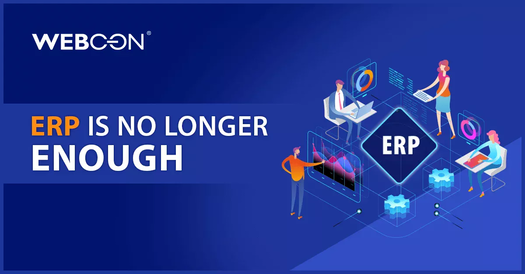When I first joined WEBCON nearly a year ago, a big part of it was that I loved the platform. WEBCON didn’t just have great features – it had great fundamentals. An integrated approach to building logic, UI, and data together. True state machine logic. Model-driven everything. It’s a long list.


But the first thing anyone from WEBCON will mention is InstantChange™, the trademarked technology for being able to modify applications, well, instantly – and have that change take effect even on processes that are already in progress. Why the obsession with change – a single benefit – rather than the underlying platform superiority (of which InstantChange is but one of many benefits)?
It didn’t take me too long to realize that it’s because change really, really, really, REALLY matters.
I’m writing this mid-March 2020, and a lot of businesses are pivoting to having people work from home. It’s causing a lot of processes to change, some on a near-daily basis. And whether a business pivots to or is crippled by those changing conditions depends a lot on its ability to adapt. For example:
- Either a company delays new hires or modifies its onboarding process to allow for remote training, bring-your-own-machine policy changes, electronic signatures, etc.
- Purchasing needs to capture audit trails around the review process. A lot of things need to be bought quickly – and differently from before – and recording every step will be necessary at quarter- and year-end times. Good data will make returning to business as usual a lot less painful.
- Task orchestration, tracking, and delegation will need to be handled more formally and carefully, because managers won’t necessarily be able to glance outside their doors and see what their direct reports are doing. It’s either an integrated approach to tasks/forms or a lot of extra email and channel chatting.
It’s probably fair to say that you can build good process-centric applications using a variety of platforms. Some will require more or less money, more or less time, etc. than others. But the initial development effort is only a small part of Total Cost of Ownership.
It really is the ability to modify applications in real or near-real time, to react to user and domain feedback, to implement change, and to deploy it, that makes the difference.
I recall another workflow company referring to customers using their tools to build “disposable applications” (they’ve since stopped doing so). I’m tempted to guess that the reason those applications were “disposable” is because they were too difficult to change; customers found it simpler to just build new applications in their place, perhaps.
Well, applications are assets. Processes are assets. They should be curated, not disposed of. And WEBCON just plain gets it.
So yeah, change is good. And WEBCON InstantChange™ is as good as it gets.







